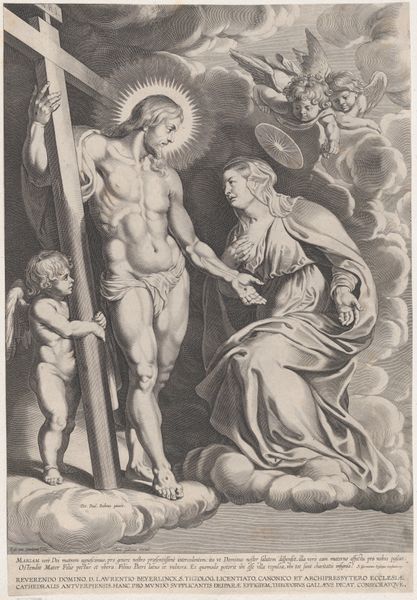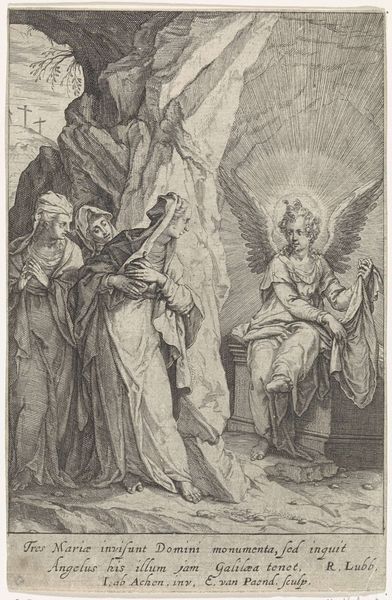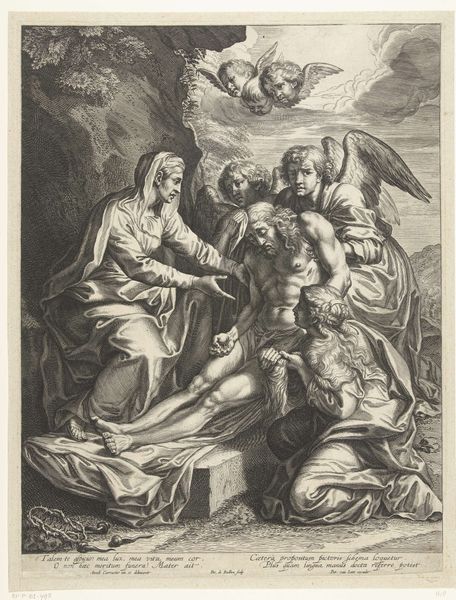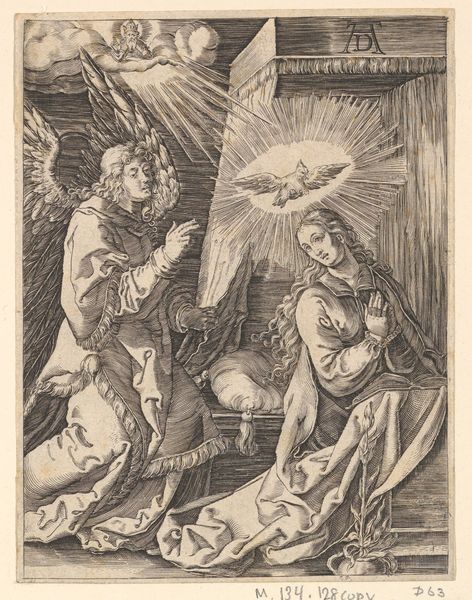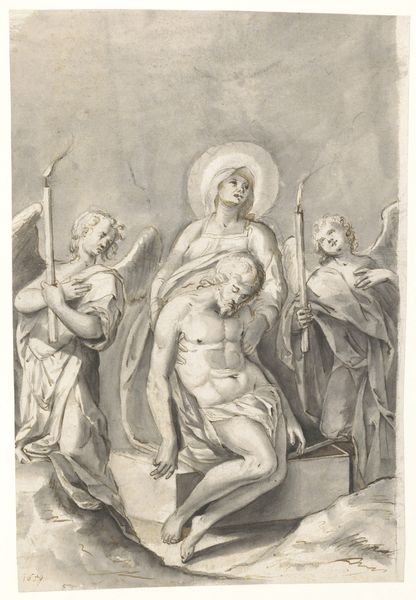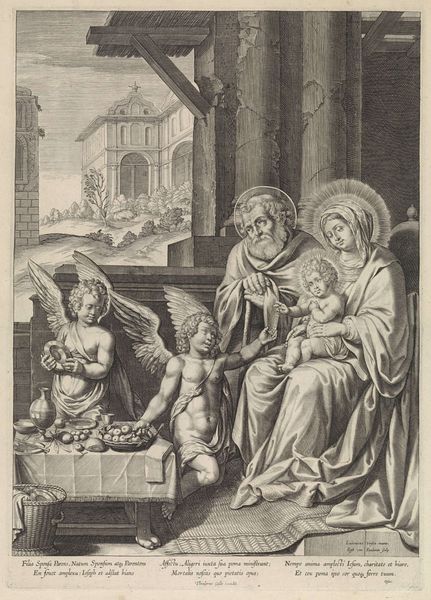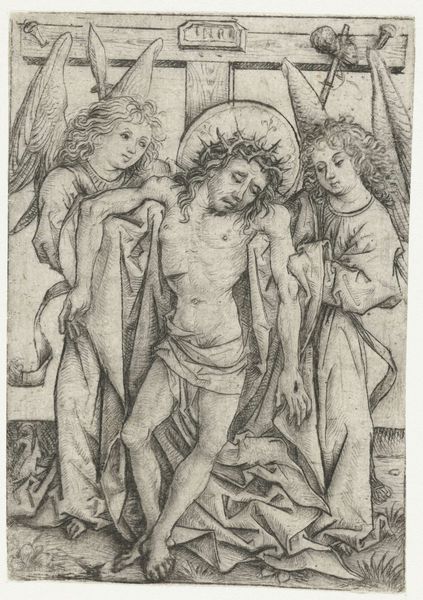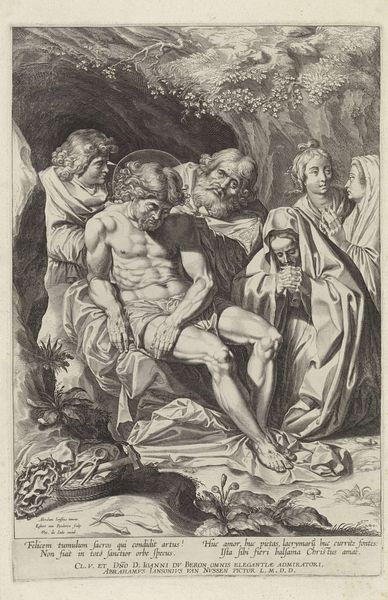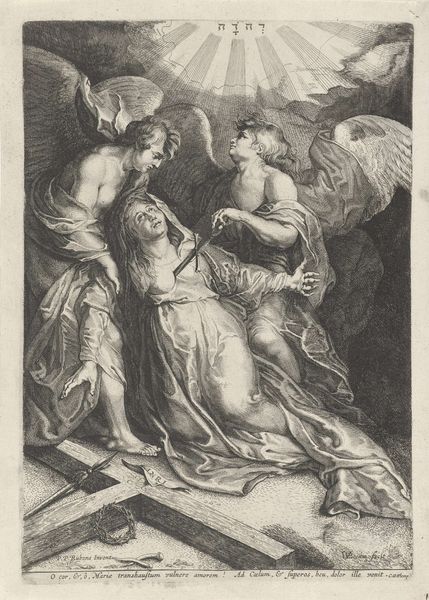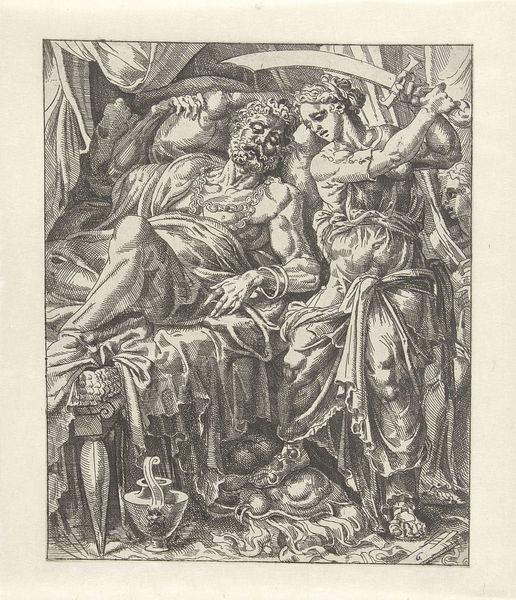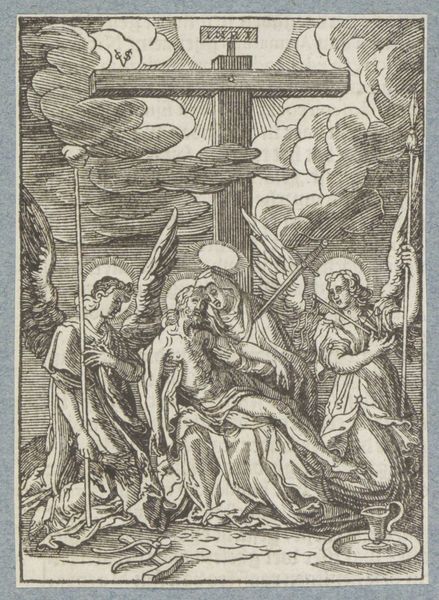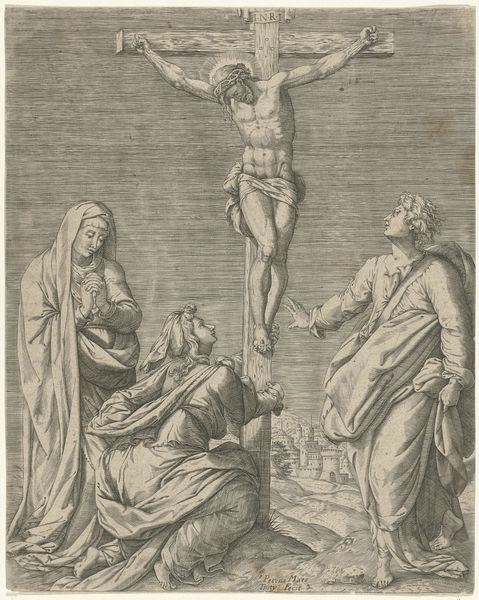
engraving
#
baroque
#
figuration
#
line
#
history-painting
#
engraving
Dimensions: height 543 mm, width 352 mm
Copyright: Rijks Museum: Open Domain
Curator: Here we have "Christ on the Cold Stone Between Two Angels," an engraving by Jacob Matham from 1603, currently residing at the Rijksmuseum. Editor: Immediately, I'm struck by the intense stillness, a kind of frozen moment of contemplation. It’s monochromatic, of course, being an engraving, but even so, the shading gives it such a stark, somber atmosphere. And the composition, so symmetrical, but subtly unsettling, almost like a play. Curator: Absolutely. The cold stone itself becomes symbolic, a stage for Christ's suffering, flanked by angels holding torches. The symmetry isn't merely aesthetic; it suggests divine order and balance, even within a scene of anguish. The angels holding what look like candles give it a performative aspect. Editor: It almost feels theatrical. And that halo… It's not the warm, radiant glow we often see, but almost sharp, spiky like his crown of thorns. Is that intentional subversion of angelic imagery, perhaps suggesting a troubled serenity or emotional agony? Curator: I think so. Matham’s attention to detail within that tension creates a strong, emotive message. The instruments of torture scattered at Christ's feet—the scourges, the bucket of wash—they speak to the physical pain but the angels, with their solemn expressions, remind us of the spiritual gravity, a higher sacrifice, so to speak. And that halo seems less divine emanation and more… symbolic burden. Editor: Yes, exactly! The crown echoes outward, illuminating everything around Christ. And look at their gazes: one downward, perhaps lost in the pain and the other slightly angled to the side, an angelic voyeur almost acknowledging our perspective, a kind of silent invitation to witness a quiet and lonely moment. Curator: What remains impactful to me is the artist’s technique of capturing light and texture. Matham utilizes hatching and cross-hatching to build the forms, rendering the folds of fabric, the smoothness of the angels’ skin, and the rough texture of Christ's beard so effectively. It’s through these very deliberate marks that emotion rises from the surface. Editor: You're right. It’s masterful in its control and restraint. Well, I am changed every time I revisit such stark imagery. These artists manage to translate the unutterable using black lines. Curator: It's an evocative dance between hope and despair, etched in time.
Comments
No comments
Be the first to comment and join the conversation on the ultimate creative platform.
